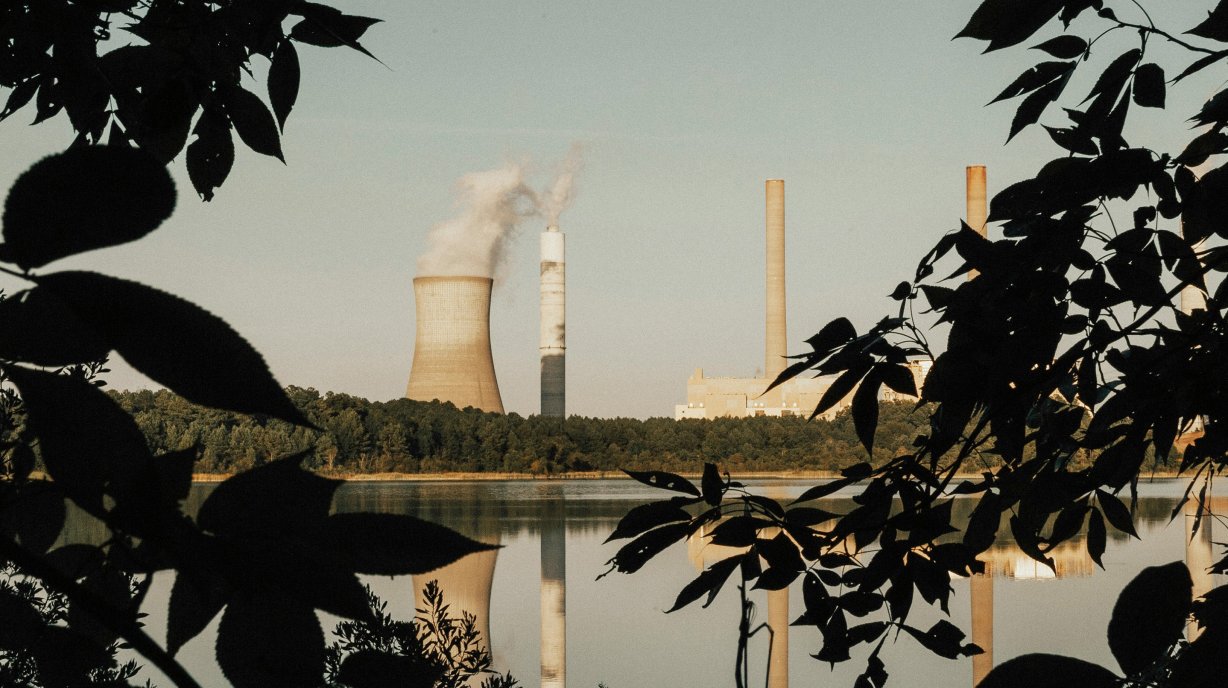At what cost? Calculating the impact of climate change – today and tomorrow

Photo par Roya Ann Miller sur Unsplash
Mostly unknown outside academic circles, the social discount rate (SDR) is vital for understanding the value of infrastructure investments far into the future. But if that’s especially relevant in a world threatened by climate change, governments and economists have long argued exactly what discount rate to use, or if a fixed rate is even necessary. Economists Christian Gollier, Frederick van der Ploeg and Jiakun Zheng recently developed a major survey to gauge opinion on the SDR across their profession. Between the theoretical importance of project-specific discount rates, and a reluctance to tweak rates in practice, their findings are worth exploring – especially once you consider the need to expand the debate beyond economics.
Droughts. Flooding. Storms. These are just some of the impacts of climate change, with experts at the United Nations warning that the social and economic consequences are already affecting the lives of billions of people. Yet if the immediate impacts of rising temperatures are clear enough from California forest fires to melting Arctic ice caps, the long-term reverberations are far harder to gauge – and getting it wrong risks undermining schemes that could secure the prosperity of our children. Central to this controversy is a formula called the social discount rate (SDR). Useful for understanding the ultimate value of an investment, rather like a traditional risk analysis but encompassing longer timespans and bigger costs, governments use the SDR when deciding to build ports, hospitals, railways and more.
Investments designed to fight climate change, everywhere from wind turbines to air carbon capture, rely on the SDR too. But with finance ministries unsure of the right figure to use across projects, or if multiple figures are even needed, the SDR remains one of the most divisive questions in economics. Once you factor in the potential social and financial costs of doing too little – by 2100, climate change could render global GDP 37% lower than it would otherwise have been – and the SDR becomes one of the most consequential too. No wonder Christian Gollier, Frederick van der Ploeg, and Jiakun Zheng, a trio of economists, recently developed a new survey to understand their field’s attitudes to the SDR, with their findings posing significant questions for academics and policymakers alike.
Investments designed to fight climate change, everywhere from wind turbines to air carbon capture, rely on the SDR too. But with finance ministries unsure of the right figure to use across projects, or if multiple figures are even needed, the SDR remains one of the most divisive questions in economics. Once you factor in the potential social and financial costs of doing too little – by 2100, climate change could render global GDP 37% lower than it would otherwise have been – and the SDR becomes one of the most consequential too. No wonder Christian Gollier, Frederick van der Ploeg, and Jiakun Zheng, a trio of economists, recently developed a new survey to understand their field’s attitudes to the SDR, with their findings posing significant questions for academics and policymakers alike.
Discounting the climate
Cost-benefit analyses are a staple across economics. The SDR represents something similar: an attempt to calculate the social benefits of a project far into the future, with the results translated into today’s currency. A low discount rate (like 2%) assumes that the benefits of a project will dissipate slowly over time, making it valuable for longer. A higher discount rate (like 7%) assumes the opposite. Implicit here is the importance of tweaking the SDR to individual projects. Given the impact of climate change, for instance, a nuclear plant should surely enjoy a lower rate than a coal mine. But between institutional inertia and decentralisation, bureaucrats have typically used a single SDR across government. Even partial exceptions tend in this direction.
The consequences of inflexibility are stark. Relying on too high an SDR needlessly inflates risk, meaning vital projects may never be approved. The reverse, for its part, is also true. Too low an SDR could waste resources on projects that finally prove fruitless. Fundamentally, that’s down to the deep uncertainty around the whole topic. For if some experts are basically pessimistic about global warming, others are far less convinced.1
- 1Nordgren, A.,2021, « Pessimism and Optimism in the Debate on Climate Change: A Critical Analysis». J Agric Environ Ethics 34, 22.

Picture by Kami Photos on Adobe Stock
In practice, that makes calculating the SDR of climate change awkward, especially once you factor in disagreement around future wealth. If, after all, our grandchildren are richer than us, costly investments to combat climate change make less sense now.2 Why, to put it bluntly, would we waste limited resources today to help plutocrats later? Under this scenario, the discount rate would necessarily be high. On the other hand, soaring living standards over the last half-century are no guarantee that growth will last forever. War and disease, and indeed global warming, could yet stymie the prosperity of our descendents, arguably making high climate SDRs a mistake. And even if GDP graphs do continue to rise, high rates may still be wrong, not least when bodies like the UN highlight the need to urgently tackle climate change in the present. Economists have even disputed how much people today should worry about the plight of future generations, with their answers informing their social discount rates.
- 2Liu, L., Rettenmaier, A. J., & Saving, T. R., 2021,« Discounting Environmental Benefits for Future Generations ». Public Finance Review, 49(1), 41-70.
Multiple rates
With these complexities in mind, Gollier, van der Ploeg and Zheng developed a new survey to understand their profession’s thinking on the SDR. Contacting a total of 5,392 academics, of whom 948 answered at least the first of 13 questions, the results represent a major attempt to tackle this knotty economic formula. Beyond the scale of the poll, the results of the survey are striking. In the first place, that’s clear around adjusting rates. Despite the reluctance of their rulers, a full 75% of respondents advocated using project-specific discount rates.
There are signs – albeit gradually – that policymakers are moving in this direction. France, for example, adjusts SDRs based on a project’s risk. Yet that still leaves the question of exactly what rate projects should be discounted at. On average, risk-adjusting economists plumped for a figure of about 2%, fairly low when you consider that the British government sets its own SDR at 3.5%.3 Despite generally favouring risk-adjusted rates, moreover, respondents proved reluctant to change the SDR across projects. As the researchers found, almost 60% advocated using the same discount rate for hospitals and railways. In a similar vein, a third supported using a single SDR across both railway projects and climate mitigation schemes.
These results indicate that, even among economists theoretically supportive of project-specific discount rates, SDRs shouldn’t change much in reality. Just as marked, meanwhile, is how much this approach diverges from elsewhere in economics, where markets are happy slapping higher SDRs on risky projects. This conundrum – which the academics characterise as the ‘discount premium puzzle’ – can probably be explained by the hard-nosed realities of financial life. Concerned only about securing a return on their investment, rather than the success of future generations, private investors are reluctant to tolerate low returns on risky assets. Enthusiasm for climate activism could explain the more relaxed attitude of survey respondents, as could confusion about which projects actually count as risky. Because they’re busier during booms, for instance, railways and ports are more prone to macroeconomic risk. Conversely, and as the pandemic proved, hospitals and clinics can do much to hedge risk when disaster strikes.
- 3Freeman, M., Groom, M., & Spackman, M., 2018,« Social Discount Rates for Cost-Benefit Analysis: A Report for HM Treasury ».
External support
What’s clear, at any rate, is that the generally low rates advanced by economists would have serious consequences if applied beyond the academy. That’s doubly true when it comes to climate change. A low SDR makes it easier to justify spending on green projects – any new wind farm or tree-planting programme is judged to provide long-lasting benefits – while also signposting that officials take environmental threats seriously. There are signs, in fact, that governments are edging this way already. Earlier this year, for instance, the United States announced it was cutting its annual discount rate from 3% to 2%, with officials explicitly linking the move to boosting sustainable investment.

Picture by Tobias Rademacher on Unsplash
All the same, it’d probably be wrong to see low SDRs as an uncomplicated climactic good. This is partially due to the old uncertainties. Is it wise to invest billions in climate mitigation when temperatures could rise less than expected, or when future generations are rich enough to solve any problem themselves, especially when scientists themselves admit these debates are far from settled? From there, translating the survey results into policy could kindle other fires. Accepting a low discount rate across a range of infrastructure, from climate mitigation to railways, presumably means that more of everything is built. But what happens if a carbon capture project is greenlit alongside a new motorway – one that makes global warming worse?
There are financial worries here too. As helpful as low discount rates are from an infrastructure perspective, all these schemes need to be funded. As public projects, that means taxpayers will inevitably be squeezed. Taken to extremes, the study warns that focusing exclusively on pure development, to the detriment of flesh-and-blood people, risks sparking famine of the sort suffered by the Soviet Union in the 1930s. Not that the situation is hopeless. From a statistical perspective, one solution could be to use discount rates that decline over time, potentially ensuring the numbers remain more accurate for longer.4
At the same time, the researchers emphasise the need to integrate their expertise with other disciplines. To what extent climate change gets worse over the coming decades, and therefore how valuable mitigation efforts might be, is essentially a question for climate scientists. Whether people alive today have a duty towards their descendents centuries from now is probably best tackled by philosophers. And even if economists eventually do agree on the ideal SDR for the good of the planet, they still need to translate their findings into practical policy. That means convincing politicians, civil servants – and ultimately the voting public. Given the potential of climate change to reshape life for everyone on earth, that breadth feels wholly appropriate.
- 4Eden, M., 2023,« The Cross-Sectional Implications of the Social Discount Rate». Econometrica, 91 : 2065-2088.













